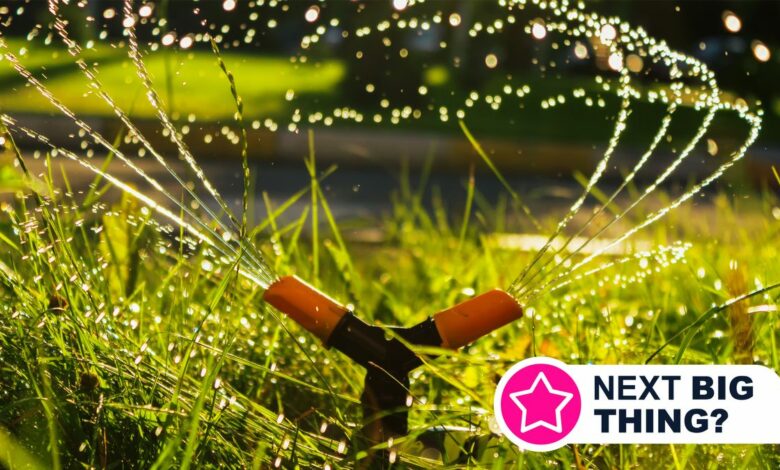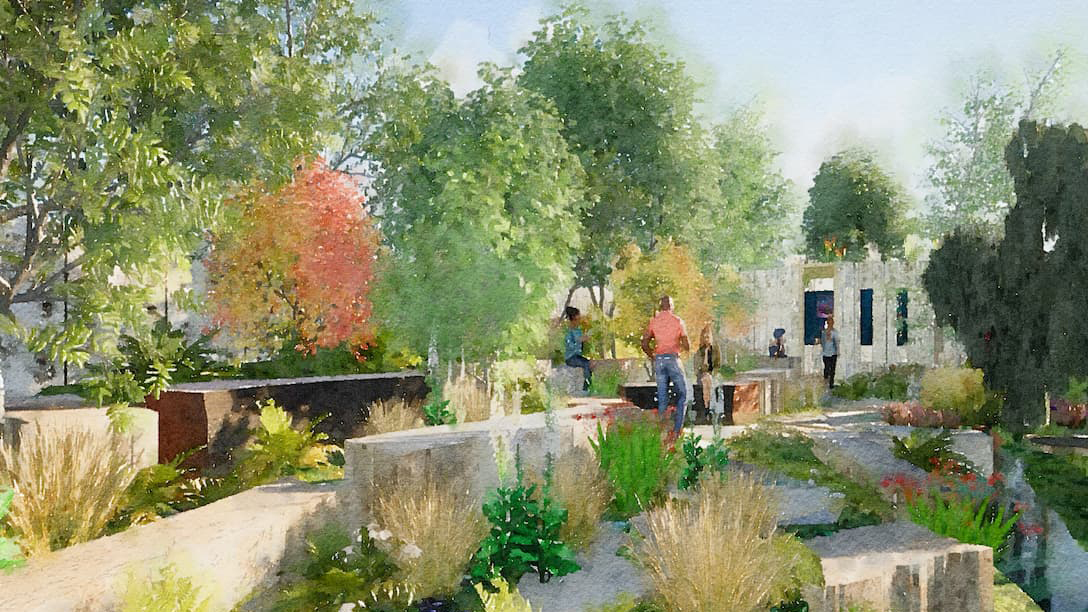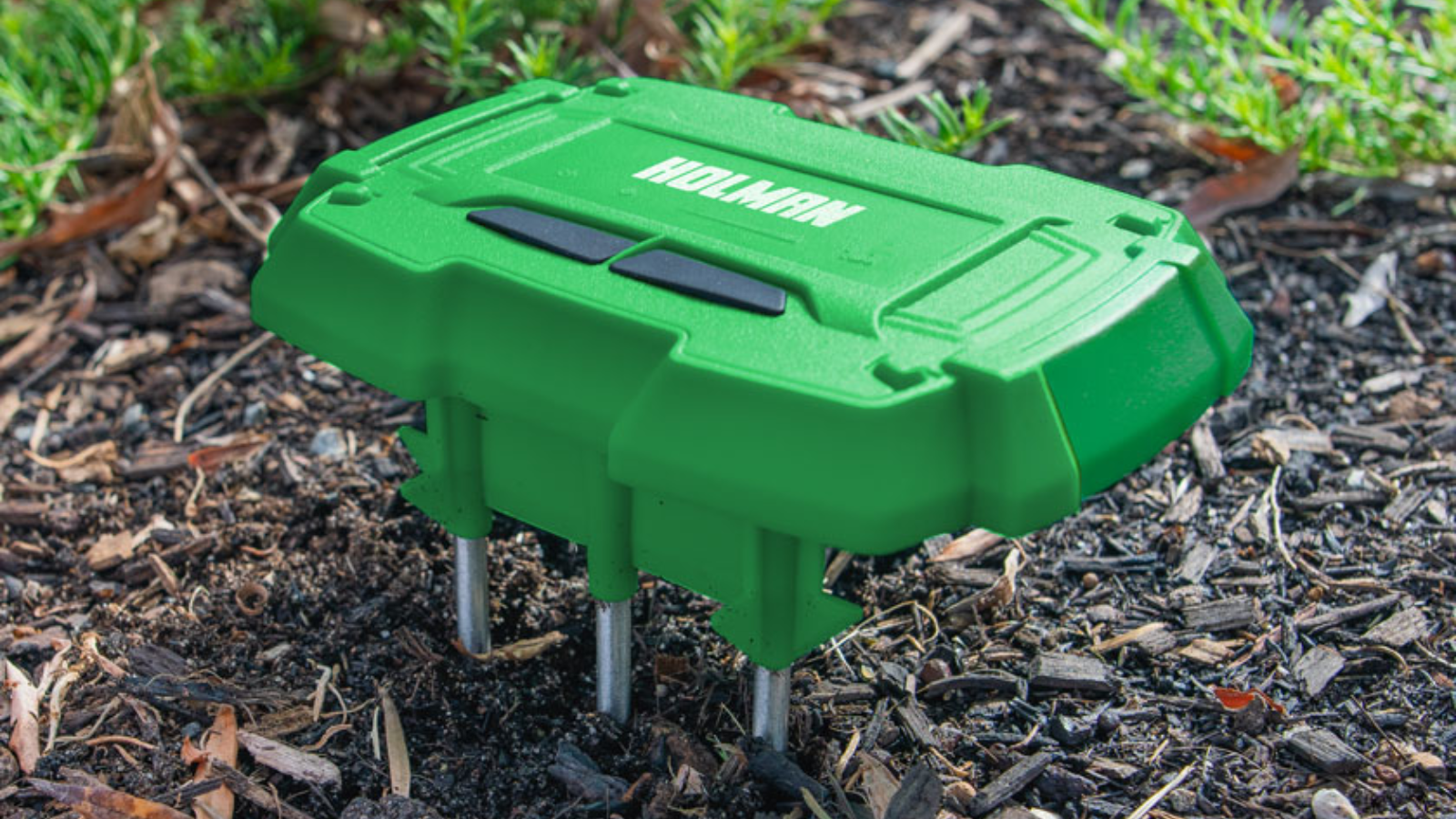‘I could use a haircut’: the first AI-powered garden lets you chat flowers and soil

- ‘Intelligent Garden’, designed in collaboration with Microsoft, will be on display in 2025
- Sensors monitor the health of the garden with an AI model trained on the plant data
- Visitors can also ask the garden questions and get answers
AI could soon take the guesswork out of gardening and let you have a conversation with your lawn and plants. By monitoring environmental factors and feeding them into a model trained on plant data, so-called ‘intelligent gardens’ could soon tell you when to water, trim and/or fertilize your plot.
That is the promise of the Avanade ‘Intelligent’ Gardenwhich will appear at the RHS Chelsea Flower Show in Great Britain next year. The showpiece, created by garden designer Tom Massey in collaboration with Microsoft, will be embedded with a series of sensors that feed real-time information into an AI model.
Those sensors track factors such as soil moisture, pH and nutrient levels, air quality, temperature and rainfall. This information alone would be useful to anyone who maintains a garden, but the advantage of the dynamic AI model is that it is proactive in monitoring conditions and predicting changes.
Designer Tom Massey told The Guardian that the garden will also be interactive. For example, visitors can ask, “How are you?” and “it could answer: I need a little more water, maybe I could use a haircut,” he added.
In short: he can tell his horticulturists how he feels and what he needs.

This will be reflected at the British Chelsea Flower Show (from 20 to 24 May 2025), where visitors to the pavilion can interact with a digital version of the smart garden. It will ‘respond’ to visitor queries using live data, providing an immediate picture of its health.
Besides the novelty factor, the idea here isn’t just to make gardeners’ lives easier. One of the main motivations behind the installation is to promote efficient use of resources. By understanding exactly what’s happening in the garden, caregivers can give him exactly what he needs – and nothing more.
Water saving is an example of this. Whether you use a hose or a sprinkler system, most gardens are watered on a schedule, rather than when the plants actually need it. In an intelligent garden, watering would be based on soil moisture content, even down to specific areas.
So instead of overwatering the entire plot, a gardener can get an alert that only one section needs topping up. In larger gardens with automated systems these could be activated based on the same data.
A smarter garden

This is not the first time we have seen the use of smart garden sensors. The Netatmo Smart Home Weather Stationfor example, can be combined with a Smart rain gauge to accurately track rainfall, along with other environmental data. With that information you can determine whether your garden needs a drink.
Holman also makes one Smart moisture sensorthat connects via Wi-Fi to one of its tap timer irrigation systems. This monitors soil moisture and temperature and then automatically adjusts your watering schedule to help reduce waste. But “intelligent gardens” promise to take that to a new level with conversational interfaces and more.
Such sensors will be the main source of data in any intelligent garden. What AI adds to the equation is the ability to bring everything together into a dynamic, predictive model. By processing live information, a picture can be created of the health of an entire garden. Over time, it will be able to anticipate what a garden needs, learn seasonal shifts and detect any anomalies in growing conditions.
The real world application of this technology is clear. Not only will it reduce waste and therefore lower your water bill, but it will also fundamentally help you keep your plants alive and thriving.
This isn’t just about being a lazy gardener: in a world affected by climate change, it will become increasingly important to understand what green spaces need to stay healthy.




